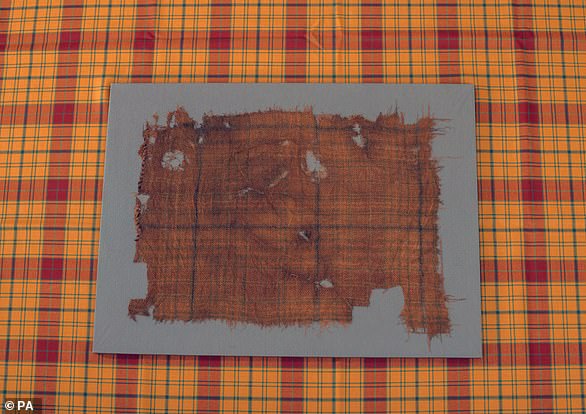The truth about the offal: Haggis has its historical roots in ENGLAND, claims AI on Robert Burns Night
Tonight, Scots will be tucking into haggis, neeps and tatties to celebrate the birthday of Robert Burns, the 18th century Scottish poet.
Since his 1786 poem, ‘Address to a Haggis’, the savory pudding has been commemorated as Scotland’s national dish.
However, according to an artificial intelligence chatbot, this cultural icon may not be what it seems.
Bard, Google’s free AI tool, claims the dish – made from offal, oats and herbs – has its ‘historic roots in English culinary traditions’.
It admits that haggis ‘plays a central role in traditional Scottish celebrations such as Burns Night and Hogmanay’, but it has a ‘complex and interconnected history’.
It is widely regarded as a Scottish creation and is often described as the country’s national dish. But could haggis actually be English?
According to Bard, the first recorded recipes called ‘hagws’ or ‘hagese’ come from English cookbooks from the 15th century.
Moreover, similar dishes containing offal and animal stomachs existed in England for centuries before they became associated with Scotland, the chatbot points out.
“Some food historians argue that haggis became less popular in England when the diet shifted to more readily available cuts of meat during the Agricultural Revolution,” the report says.
While the historic English version of haggis used offal and spices, the Scots can probably take credit for introducing oatmeal to the recipe, Bard admits.
AI tools like Bard and ChatGPT are trained with large amounts of text to provide concise summaries, although they can make mistakes.
However, Bard appears to substantiate claims made in a controversial 2021 article The economist by the Scottish writer Emma Irving, who confidentially describes it as an English invention.
“What many people don’t know is that Scotland’s national dish was invented by their oldest enemy: the English,” says the researcher and Oxford graduate.

Scots around the world celebrate Burns Night today (25 January) in honor of the life and poetry of poet Robert Burns. The haggis was described by Burns in 1786 as ‘Great leader of ‘the pudding race’
There is no mention of haggis in any ‘identifiably Scottish text’ until 1513, when it appears briefly in a verse by William Dunbar, a Scottish poet and priest at the court of James IV.
But this is almost 100 years after the first recording of a haggis recipe, in an English cookbook called ‘Liber Cure Cocorum’ dating from about the year 1430 and originating from Lancashire.
Irving said Haggis only became connected to Scotland after the Highland Clearances between 1750 and 1860, when many tenant farmers were evicted to make way for sheep.
She told BBC Radio 4: ‘Haggis, because it was so economical and also nutritious, became very popular north of the border.’
She said the stereotype of a poor farmer eating offal was ‘used to put successful Scottish people in their place’.
She added: “Burns saw this slight and he turned it into a tribute.
‘He saw the poetry in Haggis, for him it became an emblem of the Scottish character, a little resourceful, warm-hearted and modest, and you know everything that the decadent English were not.’
According to Professor Rebecca Earle, a food historian at the University of Warwick, historical versions of haggis may have existed in various forms in England and Scotland.
‘Many cultures have versions of a sausage-like thing, made up of meat scraps and some sort of grain,’ she told MailOnline.

AI tools like Bard and ChatGPT are trained with large amounts of text to provide concise summaries, although they can make mistakes
‘The specific characteristics of that combination of grain and meat – oats, rice, wheat, lamb’s lungs, pig’s blood – make each dish distinctive, but they are all part of a broader category of food shared by many people.
‘We like the idea that a specific person ‘invented’ a dish, but that’s rarely how history works.
“Just because someone wrote down a recipe doesn’t mean no one has made that dish before.”
Due to the high ecological footprint of haggis, vegetarian haggis have become an increasingly popular fixture on supermarket shelves in recent years.
Instead of offal, it usually contains a mix of vegetables and legumes, along with the usual herbs and seeds to resemble the dark bits of offal.

